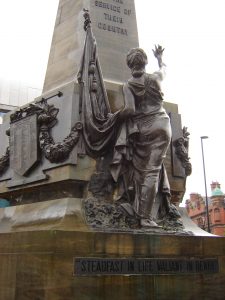
Welcome to The Combined Honours research blog!
What the blog aims to do:
Place to stimulate your interests
The Combined Honours Research site does not aim to be a comprehensive ‘interactive bibliography’ on all things ‘Newcastle’. Instead it provides a foundation, a collection of interesting, multi media, multi format, multi and cross disciplinary resources for you to dip in and out of and stimulate your interests and ideas.
Offers scope and breadth: models interdisciplinarity of ideas
Throughout this blog we have linked and tagged sources, aiming to show you how the information spans across disciplines and relates to different subjects simultaneously. In this manner, it is easy to see how the sources have originated in different contexts, for different purposes. Great research projects tend to include a breadth of research (so using sources that originate from different contexts and have different purposes) and a depth of research (so this is where you then investigate your chosen topic further, thinking about and considering the topic at a deeper level).
Open, productive and collaborative research dialogue and engagement
What we would love to achieve with this blog is an archive of student and staff work, wherein we can capture some ‘depth’ to add to the early breadth of the blog as it stands. We encourage you to see Combined ‘research’ as a sharing and collaborative community, and so adding, commenting on, posting, contributing to the blog as you go would be much valued. The Combined Honours research blog aims to simulate a real life research environment; we aim to show that ‘research’ doesn’t and shouldn’t exist in isolation, and by the process of sharing and interacting with each others ideas and projects, we create a healthy and productive research dialogue.
Modelling platforms to present, ways to engage and audience
In short, this is a collaborative interactive bibliography that we aim to grow over time. It provides a good place to initiate and spark your own research ideas. Each clip, sound-bite, link, description, article, chapter, diary entry etc. included, aims to be short, offering a taster, a snippet of an idea, from which you can grow your own project and / or, weave some of the blog site ideas together. We have provided numerous examples of presentation styles and formats too, such as Prezzi, biteable, YouTube (using film editor) etc. as we hope that you will experiment with presentation style and format too, in order to think about how to best engage an audience with your research.
A research archive: longevity and purpose
We look forward to your final research project contributions being part of our collective bank of research forever more. The longevity, use, purpose and dissemination of research are important issues for all researchers, and so with this blog we hope to offer you a place to publish and showcase your work in a live, useable and working research environment. We hope the blog (which we aim to make ‘public’ ) will help you get your work recognised and your names credited with your findings.


